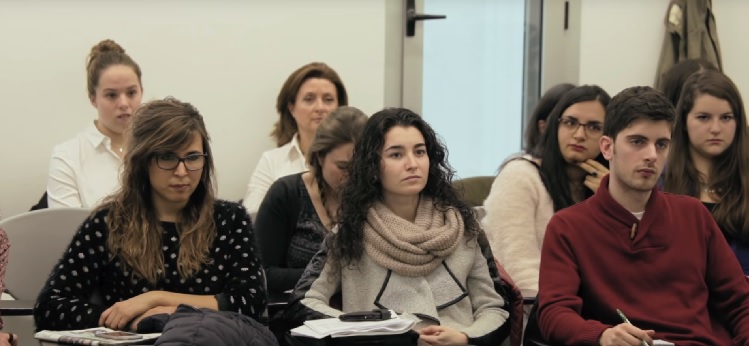UPF is the Spanish public university with the highest academic performance
UPF is the Spanish public university with the highest academic performance
According to the latest edition of the report by the CRUE entitled “The Spanish University in Figures” presented recently, UPF’s academic performance during the 2017-2018 academic year was 89.43%, almost two points above that of Carlos III University, in second place.

Pompeu Fabra University is the public Spanish face-to-face learning university with the highest institutional rate of academic performance, according to the report “The Spanish University in Figures. Year 2017 and 2017/2018 academic year”, presented by CRUE Universidades Españolas on 5 February 2020 in the auditorium of the Ramón Areces Foundation in Madrid.
UPF, in addition to leading the academic performance rate (calculated from the total credits passed in relation to total credits registered for) in the 2017-2018 academic year, with a score of 89.4%, already led the ranking for the 2006-2007 academic year, with 81.70%, and also that of the four academic years from 2014-2015 and 2017-2018. Between the 2008-2009 academic year (83.54%) and the average for the period 2014-2015 to 2017-2018 (89.4%), UPF has increased its academic performance rate by 7.05%.
Between the 2008-2009 academic year and the average for the period 2014-2015 to 2017-2018, UPF has increased its academic performance rate by 7.05%.
The academic performance of other public universities (the report does not include data on that of private ones) behind UPF regarding the 2017-2018 academic year is as follows: Carlos III Madrid (87.6%), the Autonomous University of Barcelona (84.8%), Rovira i Virgili, Tarragona (84.5%), and the Public University of Navarre (84.2%). These same five institutions held the top five positions, and in the same order, for the 2008-2009 academic year.
According to the report, although the implementation of the European Higher Education Area is the main reason for the improvement in the academic performance of students enrolled in public face-to-face universities in Spain, the differences between universities remain. Thus, for example, the gap between UPF and the Polytechnic University of Cartagena, first and last in the table, respectively, both for the 2008-2009 and the 2017-2018 academic years, has remained at close to thirty points.
“The explanation for the persistence of differences in academic performance rates does not seem to lie in the presence of different levels of resources for the performance of university activities; it may be found in the differences that may exist in the organization of university activities and in the allocation of available resources to the productive units (centres, departments, institutes and research groups)”, the study reveals.
A study addressing crucial issues on the Spanish University System
In “The Spanish University in Figures. Year 2017 and 2017/2018 academic year”, drafted by Juan Hernández Armenteros (University of Jaén) and José Antonio Pérez García (Polytechnic University of Valencia), crucial issues on the Spanish University System are dealt with in order to provide evidence regarding the nature of the structural and cyclical problems affecting them. In addition, a final chapter is added which summarizes the financial, productive and organizational conditions to which the Spanish universities have had to adapt.
The report, which analyses 48 public and 19 private universities, is based on more than one million items of data set out in over 200 graphs and tables, and in the sections in which the available information so permits, it compares them to the situation of other higher education systems in Europe and the OECD. In addition, it includes a final chapter which summarizes the financial, productive and organizational contexts in which the Spanish universities have had to operate.
